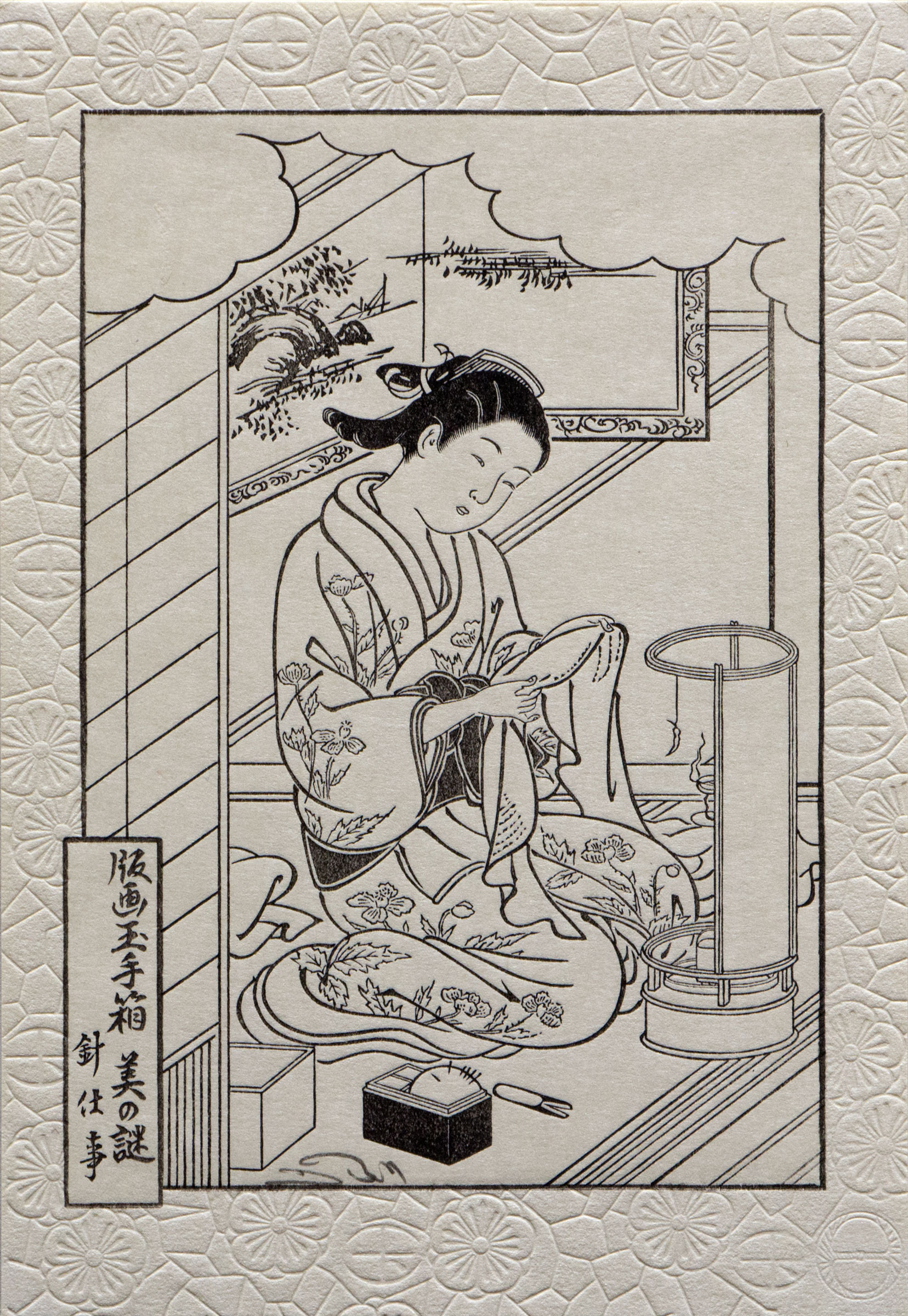Data
Description
Our pendulum swings back the other way now, and we jump back in time nearly two hundred years, to 1740, a time when the multi-colour printing process had yet to be 'invented'. This is thus a sumizuri-e (black-printed picture), one page of the book 'Ehon Chiyomigusa', by Nishikawa Sukenobu, a collection depicting women in typical scenes of daily life. I have selected one that must have been a very common domestic scene - a woman doing needlework by the light of an andon lamp.
With the 'distraction' of colour taken away, we are left with nothing but the line, and are faced with a true artistic puzzle. The artist has obviously done his 'job' well, because we can instantly recognize that this is a woman with her sewing. And if asked the question, "Does this look realistic?" most of us would probably answer in the affirmative; there seems at first nothing 'abstract' about this at all.
But when you begin to analyze the drawing, you discover that Sukenobu simply 'cannot draw'. The normal proportions of the human body have been completely distorted! An open human hand will cover the same area as a face, but hers are ridiculously small; her torso is elongated, and her mouth is reduced to a fraction of its normal size. If I were in a life drawing class and handed this to the instructor, what would be his comment?
But what is far more astonishing than the mere presence of these 'distortions' is the fact that pretty much every ukiyo-e artist over the entire course of the history of the genre followed exactly these same conventions, each copying them from his master. Couldn't anybody see what was in front of them?
Well, of course they could. But - as will see again and again in this series - 'realism' wasn't the point. And this too is a paradox. In an era before the invention of the camera, when surely one of the main functions of the artists in society was to make accurate records of the things that they saw, these men chose to do no such thing. They locked themselves into a set of conventions that would remain basically unchanged until the Meiji era, and the arrival of real 'realism' with the camera.
It's lies, all lies. And yet one of the most wonderful bodies of work ever created by the hand of man!
David
Other prints in this set
-
 Mystique of the Japanese Print
Mystique of the Japanese Print
-
 Mt. Fuji from Lake Kawaguchi
Mt. Fuji from Lake Kawaguchi
-
 Kabuki Actor
Kabuki Actor
-
 Hydrangea in Rain
Hydrangea in Rain
-
 Young Girl
Young Girl
-
 Mt. Unzen
Mt. Unzen
-
 Needlework
Needlework
-
 Late Autumn
Late Autumn
-
 Japanese Lute
Japanese Lute
-
 Moon of Enlightenment
Moon of Enlightenment
-
 Winter Ferry
Winter Ferry
-
 Urashima Taro
Urashima Taro
-
 Still Life with Fugu
Still Life with Fugu
-
 Itinerant Dancer
Itinerant Dancer
-
 Meiji Patterns
Meiji Patterns
-
 Ukiyo-e Beauty
Ukiyo-e Beauty
-
 Chinese Woodblock Print
Chinese Woodblock Print
-
 Parrot and Acorns
Parrot and Acorns
-
 Mt. Fuji in a Window
Mt. Fuji in a Window


